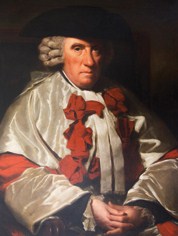John Swinton, Lord Swinton facts for kids
John Swinton (born 1723, died 1799) was an important Scottish lawyer and judge. He became a top judge in Scotland, known as a Senator of the College of Justice. He also wrote several books about law.

Contents
Life of John Swinton: A Scottish Judge
John Swinton was born in 1723. His father, also named John Swinton, was a lawyer from Swinton House in Berwickshire. His mother was Mary Semple.
Early Career and Legal Roles
John Swinton became a lawyer, called an "advocate," in 1743. This meant he could speak for people in court. In 1754, he was made the Sheriff of Perth. A sheriff in Scotland was like a judge who handled local legal matters.
Later, in 1766, he became a solicitor. This role involved helping with legal documents and advice. He also worked for the commissioners who managed churches in Scotland.
Becoming a Judge: Lord Swinton
In 1782, John Swinton was promoted to a high position on the Scottish bench. This meant he became a judge in a very important court. He was given the special title of Lord Swinton.
A few years later, in 1788, he became a "lord of justiciary." This was an even higher judicial role, dealing with serious criminal cases. At this time, he had legal offices in Edinburgh. He also owned a home called Dean House in Edinburgh.
Swinton House and Later Life
His main country home, Swinton House, sadly burned down in 1797. It was rebuilt after he passed away.
Lord Swinton continued to serve as a judge until his death. He passed away at his home, Dean House, in Edinburgh on January 5, 1799.
John Swinton's Published Works
Lord Swinton wrote several important books and papers about law. These publications helped explain and improve the legal system in Scotland.
- Abridgment of the Public Statutes relative to Scotland: This was a large collection of Scottish laws. It helped lawyers and judges find and understand the laws easily.
- Free Disquisition concerning the Law of Entails in Scotland: This book discussed a specific type of property law in Scotland. It explored how land could be passed down through families.
- Proposal for Uniformity of Weights and Measures in Scotland: In this work, he suggested making weights and measures the same across Scotland. This would make trade and business fairer.
- Considerations concerning a Proposal for dividing the Court of Session: This paper looked at ways to improve the main civil court in Scotland. He suggested ideas like dividing the court into smaller groups and making it easier to handle small legal cases. He also thought about bringing back jury trials for some civil cases.
John Swinton's Family Life
John Swinton married Margaret Mitchelson. They had a large family with six sons and seven daughters.
Notable Children
Their eldest son, also named John Swinton, followed in his father's footsteps. He became the Sheriff of Berwick from 1793 to 1809.
Their fourth son, Lieutenant Colonel Robert Swinton, was born in 1773 and passed away in 1821. He is remembered at St John's Churchyard in Princes Street in Edinburgh.
Their last surviving son was George Swinton. He was a very important official in India, serving as the Chief Secretary to the Bengal Civil Service. George Swinton passed away in 1854 and was buried in Dean Cemetery, which is near where his father's old Dean House used to be.

